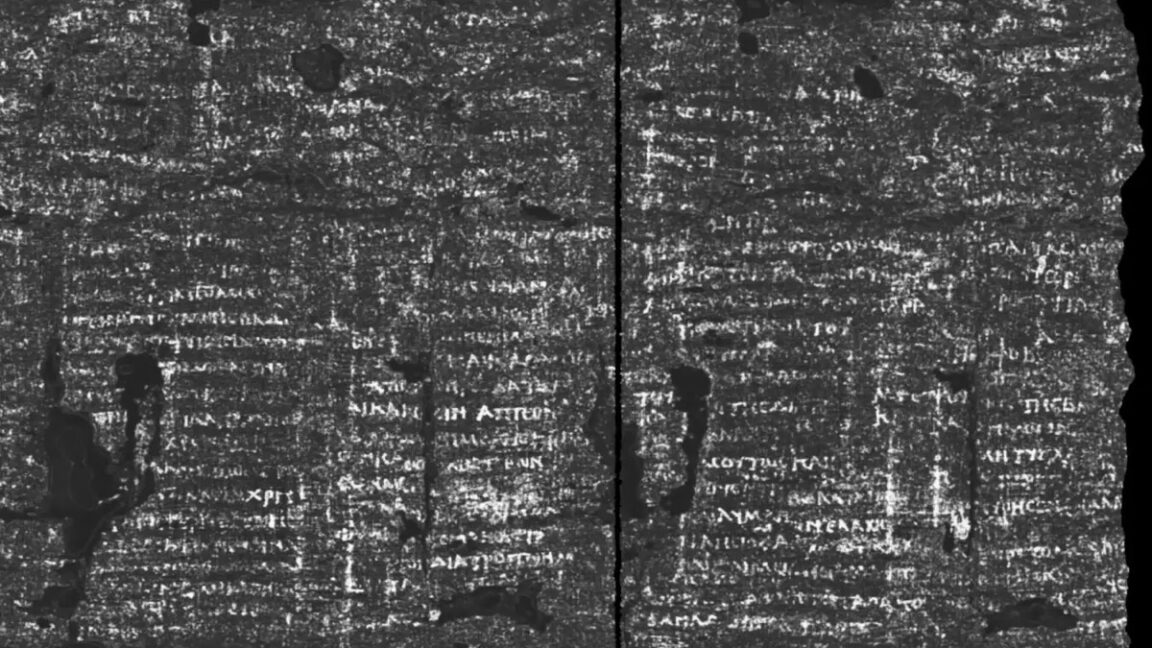Breakthroughs in Deciphering Ancient Scrolls and Mummy Secrets

- The Vesuvius Challenge has successfully generated the first X-ray image of the inside of a scroll
- Scientists have identified the distinctive smells associated with Egyptian mummies
- The smells are predominantly woody, spicy, and sweet
- The breakthroughs demonstrate the power of interdisciplinary research and cutting-edge technology
- The discoveries provide new insights into ancient civilizations and their practices
The Vesuvius Challenge, an ongoing project, has employed digital unwrapping and crowd-sourced machine learning to decipher the first letters from previously unreadable ancient scrolls found in an ancient Roman villa at Herculaneum. The latest breakthrough is the successful generation of the first X-ray image of the inside of a scroll (PHerc. 172) housed in Oxford University's Bodleian Libraries.
The machine learning aspect of this latest breakthrough focused primarily on detecting the presence of ink, not deciphering the characters or text. Oxford scholars are currently working to interpret the text, with the first word to be translated being the Greek word for disgust, which appears twice in nearby columns of text.
In another significant discovery, researchers at University College London have identified the distinctive smells associated with Egyptian mummies, predominantly woody, spicy, and sweet. This finding provides new insights into the embalming methods used by ancient Egyptians and sheds light on the secret ingredients used in the mummification process.
Uncovering the Secrets of the Past
These breakthroughs demonstrate the power of interdisciplinary research and cutting-edge technology in uncovering the secrets of the past. By combining advanced imaging techniques, machine learning, and archaeological expertise, scientists are able to gain a deeper understanding of ancient civilizations and their practices.